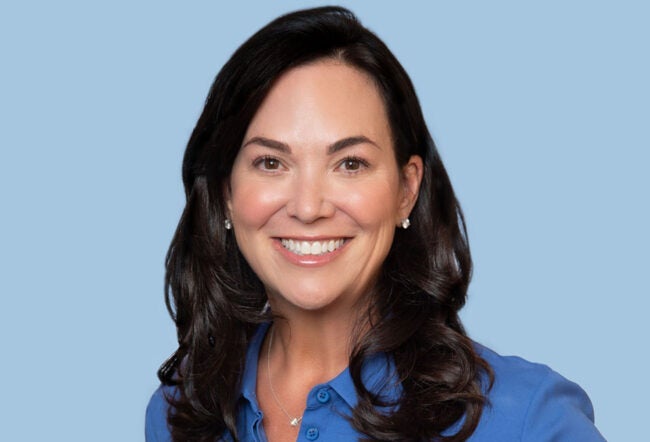If The Walt Disney Co. were to animate its own story of corporate governance and executive leadership, would Disney CEO Michael Eisner be a beloved Shrekian character, or a bad uncle like Scar in “The Lion King” who forms an alliance with the hyenas and devastates paradise? Would the company’s tale have a happy ending with corporate directors asserting independence, or would they remain a passive group with little influence on company direction?
After years of controversy over board member conflicts-of-interest, proxy fights and corporate maneuvering, these questions remain unanswered even as facts and speculation surrounding Eisner’s retirement intentions have emerged, say several governance experts.
The saga took another turn this week when Disney’s board of directors announced on Tuesday that it plans to replace Eisner by next June and also look for a new chairman. While the announcement showed progress on the succession question – an issue that has roiled the company for more than a year – there still remain unanswered questions.
Eisner, among the nation’s most controversial CEOs, has said he will step down as CEO in 2006. In an interview with Fortune magazine, he goes even further, saying “the assumption is that I would not continue on the board or as chairman.” But separate press reports in the Los Angeles Times say that Eisner is actively pushing Disney executive Robert Iger as his replacement, thereby attempting to have a strong hand in selecting his successor, as Jack Welch did at General Electric. In addition, these sources suggest that Eisner wants to remain on the board, possibly as chairman – a position now held by former Maine senator George Mitchell.
In its announcement on Tuesday, the Disney board said it has no problem with Eisner continuing in his position until his contract runs out two years from now, although it said Eisner may in fact leave earlier. “He will continue to be the chief executive officer until such time as the board determines it is appropriate for the new CEO to take office,” stated board chairman Mitchell, according to a news report on CNNmoney. The board said that Iger would be the only internal candidate competing for the job against a field of as-yet-unidentified outsiders.
New Executive Needs Free Hand
However the script plays out, corporate governance experts agree this is a crucial time for Disney.
For one, continuing uncertainty over Eisner’s tenure could very likely inhibit the board’s deliberative process of evaluating and, if necessary, formulating a new strategic direction for Disney, says Wharton’s Elizabeth E. Bailey, an expert on succession issues. The board could decide that the company not only needs a new strategic direction – as the boards of Hewlett Packard and IBM did when they hired Carly Fiorina and Lou Gerstner, respectively – but that it also needs a new public face and a new personality to heal divisions – a step taken by Time Warner Inc. in the post-AOL period, Bailey says.
The Burbank, Calif., media company has about 120,000 employees in its major divisions, including the ABC Television Network and the Disney theme parks. The company generated $27.1 billion in revenues in 2003 and earned a net income of $1.3 billion. The company’s weak financial performance in recent years reflects disappointing returns on some of its movies and lower-than-expected attendance at its theme parks, especially in the wake of 9/11. Critics say part of the problem has been a passive corporate board that has rubberstamped Eisner’s plans during the two decades he has been in charge.
A further consideration is that outside CEO candidates for Disney must have confidence that Eisner will step down from the corporate board when the time comes, giving the new executive a free hand to run the company, experts say. Skepticism in the media industry and among investors is already high about how independent the Disney board is and how firmly it will insist that Eisner leave. It is unclear how Tuesday’s board announcement will affect these considerations, although The Wall Street Journal reports that when asked whether Eisner will remain on the board after 2006, Mitchell referred to Eisner’s comments in the Fortune article, saying “as far as the board is concerned, that’s the end of it.”
Some, however, remain uncertain over just what to expect. “If Eisner stays and in two years he ends up as chairman, we will be back where we started,” says Charles Elson, director of the John L. Weinberg Center for Corporate Governance at the University of Delaware. “This will be an exchange of titles without a real change in leadership,” he states, adding that despite Mitchell’s comments on Tuesday, he still believes Eisner’s position on the board needs to be “clarified.”
Certain outside candidates, such as highly regarded eBay CEO Meg Whitman, already have made it known publicly that they are not interested in the Disney job. Other outside candidates who have not been as explicit as Whitman include News Corp. executive Peter Chernin and Yahoo Inc.’s Terry Semel. Eisner’s decision to give what is essentially two years’ notice seems like an extraordinarily lengthy time period – and could be designed to insulate Eisner from critics’ demands that he depart sooner, some say. But it’s not unusual for a company to know two years ahead of time that a CEO will be leaving because a number of companies have a mandatory retirement age of 65. Eisner will be 64 in 2006.
Many greeted Eisner’s announcement of his departure with a sigh of relief. The tug-of-war between him and his critics has been expensive and emotionally draining for the public and Disney itself. A surprising 43% of the company’s shareholders withheld support for Eisner during the company’s annual shareholders meeting in March 2004 in Philadelphia when deciding whether Eisner should be reappointed to the board. Responding to the no-confidence vote, Eisner relinquished the chairman’s title but retained day-to-day control of the company as CEO. Critics, however, vowed at the time to press their case harder and force Eisner’s departure.
The Mitchell Factor
Their efforts seem to have borne fruit. Eisner’s 2006 retirement appeared a graceful exit for the executive and closure for the company. But at Disney, nothing is simple. For instance, Disney chairman Mitchell reaches mandatory board retirement age next year at 72, the Los Angeles Times reports. The board could vote to allow him to serve longer if it chooses. But Mitchell said on Tuesday that he would leave the board in 2006 if he is re-elected to the board in 2005. Mitchell has already indicated he would like to serve in a high-ranking post in the Kerry administration – should Kerry win the election – an appointment that would likely force Mitchell to relinquish his Disney board duties.
Meanwhile, a number of people consider Mitchell the only counterweight on the board to Eisner, in part because he has taken steps to make the board more independent. Among the members who have left the Disney board recently have been Eisner’s personal lawyer, his architect, and the principal of his children’s elementary school.
Mitchell, who has been working out of an office in Disney division ABC Inc. offices in New York, says the chairmanship is more than he bargained for when he accepted the post; it is the equivalent of a full-time job. He has a close relationship with Eisner but insists that the decisions he makes will be for the good of shareholders.
According to Robert Mittelstaedt Jr., dean of the W.P. Carey School of Business at Arizona State University, the past behavior of Eisner and the Disney board makes people suspicious. “It causes investors and others to wonder, ‘What’s behind the curtain?’ It could be quite legitimate … On the other hand, it’s hard to believe that there is not an unseen plan behind it,” says Mittelstaedt, who was interviewed before Mitchell’s comments yesterday.
As for the possibility of Eisner staying on the board, “Almost everyone agrees that having a retiring CEO on the board is a bad idea,” Mittelstaedt notes. “It does happen but I don’t think it’s good practice. That’s because you want the new CEO to do the best job he can without being second-guessed by the former CEO. The ultimate responsibility of the board – when you cut through everything else – is to hire and fire the CEO.”
Bailey suggests that Eisner’s possible position on the board after he retires as CEO should be a “non-issue.” It’s generally accepted in the boardrooms of major corporations that when a CEO retires or steps down, he or she submits a letter of resignation to the board, which can then decide to accept it or ask him to remain. The Disney board “needs to take a good hard look at what skills are needed in a new CEO,” Bailey says. “You do not look for the person. You look for the direction, or establish a strategic mandate and find the person who can take the company there. The board should be thinking, ‘What do we want the company to look like 10 or 15 years down the road.’ ” Eisner, Bailey adds, “should not be part of those discussions.”
Some corporate boards have successfully divorced themselves from strong-willed or famous chief executive officers and forced their corporations into new directions through the hiring of outside or inside executives who represented clear breaks from old regimes. Richard Parsons at Time Warner Inc., for instance, was not a career Time Warner manager but he was promoted to CEO of the New York media giant, apparently in part because of his diplomatic skills, Bailey says. His personality is in sharp contrast to the man he replaced, former CEO Gerald Levin.
Another board that exhibited a streak of independence was Hewlett-Packard’s in the late 1990s, which hired outsider Carly Fiorino. Her decision to buy Compaq Computer was controversial but her strategy was bold – a characteristic that apparently met the board’s criteria for a new leader.
In the meantime, Disney needs to find its own solution to this classic insider-outsider dilemma. Whether the sequel bombs, or is a box-office hit, remains to be seen.



